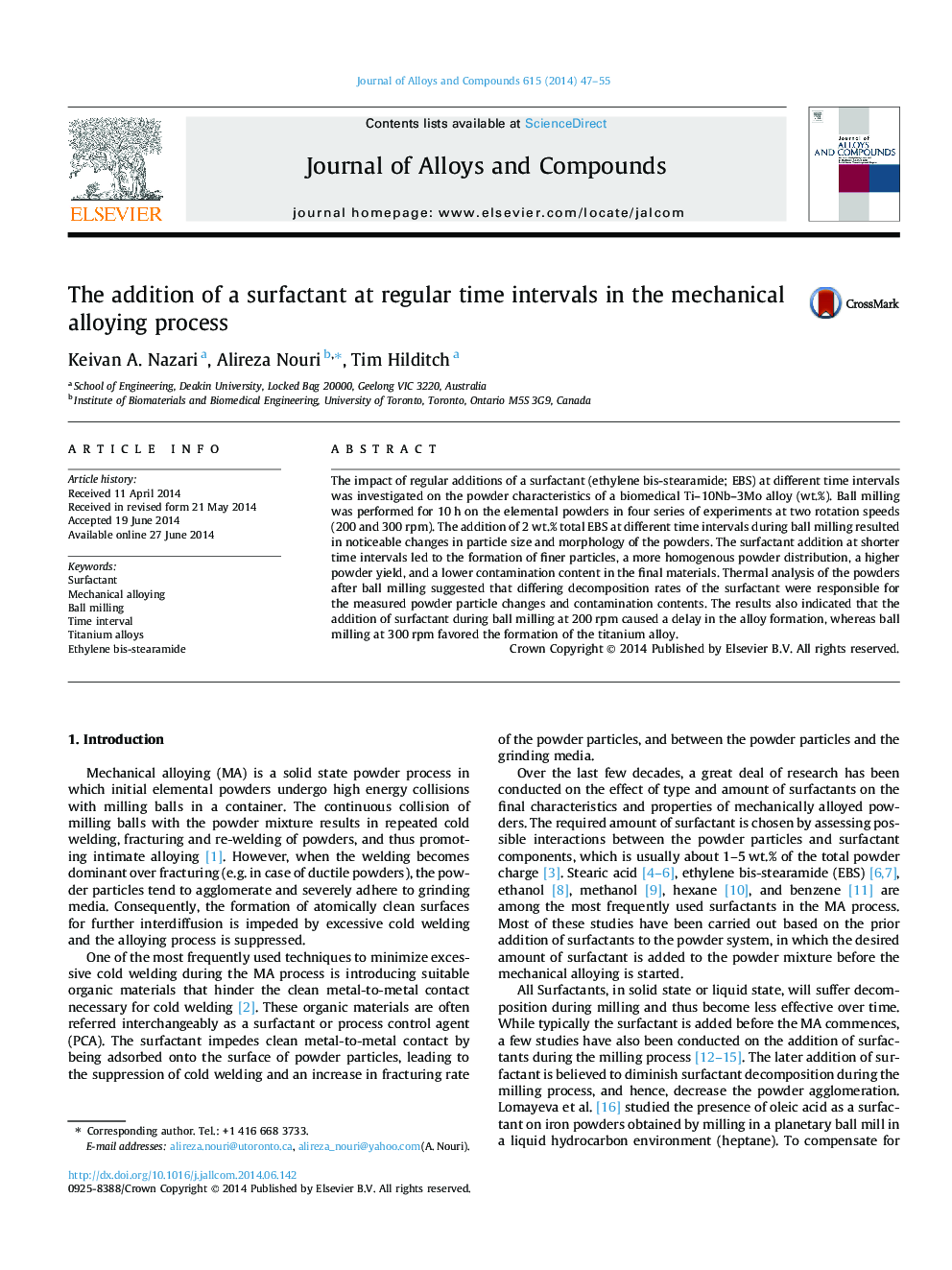| Article ID | Journal | Published Year | Pages | File Type |
|---|---|---|---|---|
| 8000796 | Journal of Alloys and Compounds | 2014 | 9 Pages |
Abstract
The impact of regular additions of a surfactant (ethylene bis-stearamide; EBS) at different time intervals was investigated on the powder characteristics of a biomedical Ti-10Nb-3Mo alloy (wt.%). Ball milling was performed for 10Â h on the elemental powders in four series of experiments at two rotation speeds (200 and 300Â rpm). The addition of 2Â wt.% total EBS at different time intervals during ball milling resulted in noticeable changes in particle size and morphology of the powders. The surfactant addition at shorter time intervals led to the formation of finer particles, a more homogenous powder distribution, a higher powder yield, and a lower contamination content in the final materials. Thermal analysis of the powders after ball milling suggested that differing decomposition rates of the surfactant were responsible for the measured powder particle changes and contamination contents. The results also indicated that the addition of surfactant during ball milling at 200Â rpm caused a delay in the alloy formation, whereas ball milling at 300Â rpm favored the formation of the titanium alloy.
Related Topics
Physical Sciences and Engineering
Materials Science
Metals and Alloys
Authors
Keivan A. Nazari, Alireza Nouri, Tim Hilditch,
